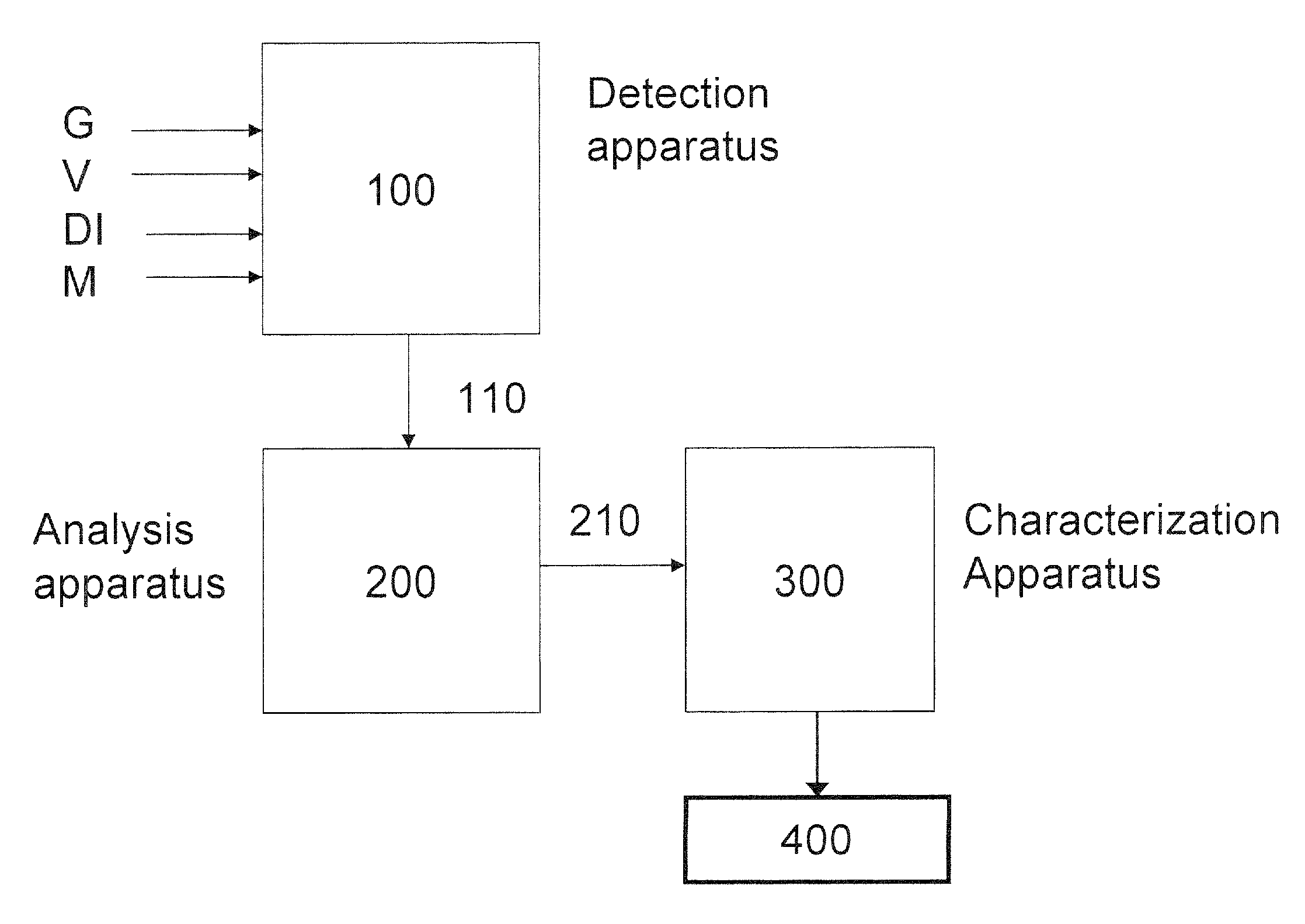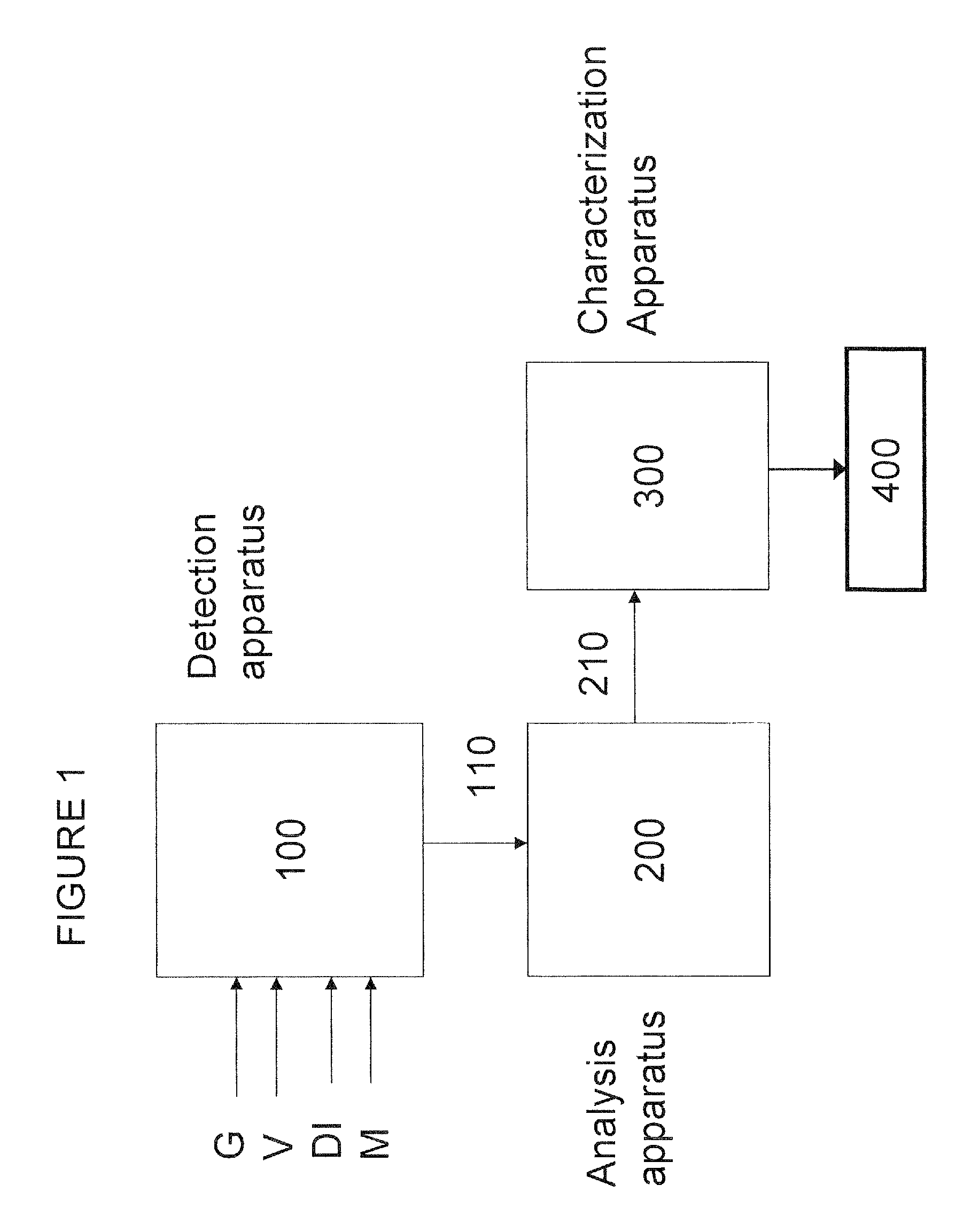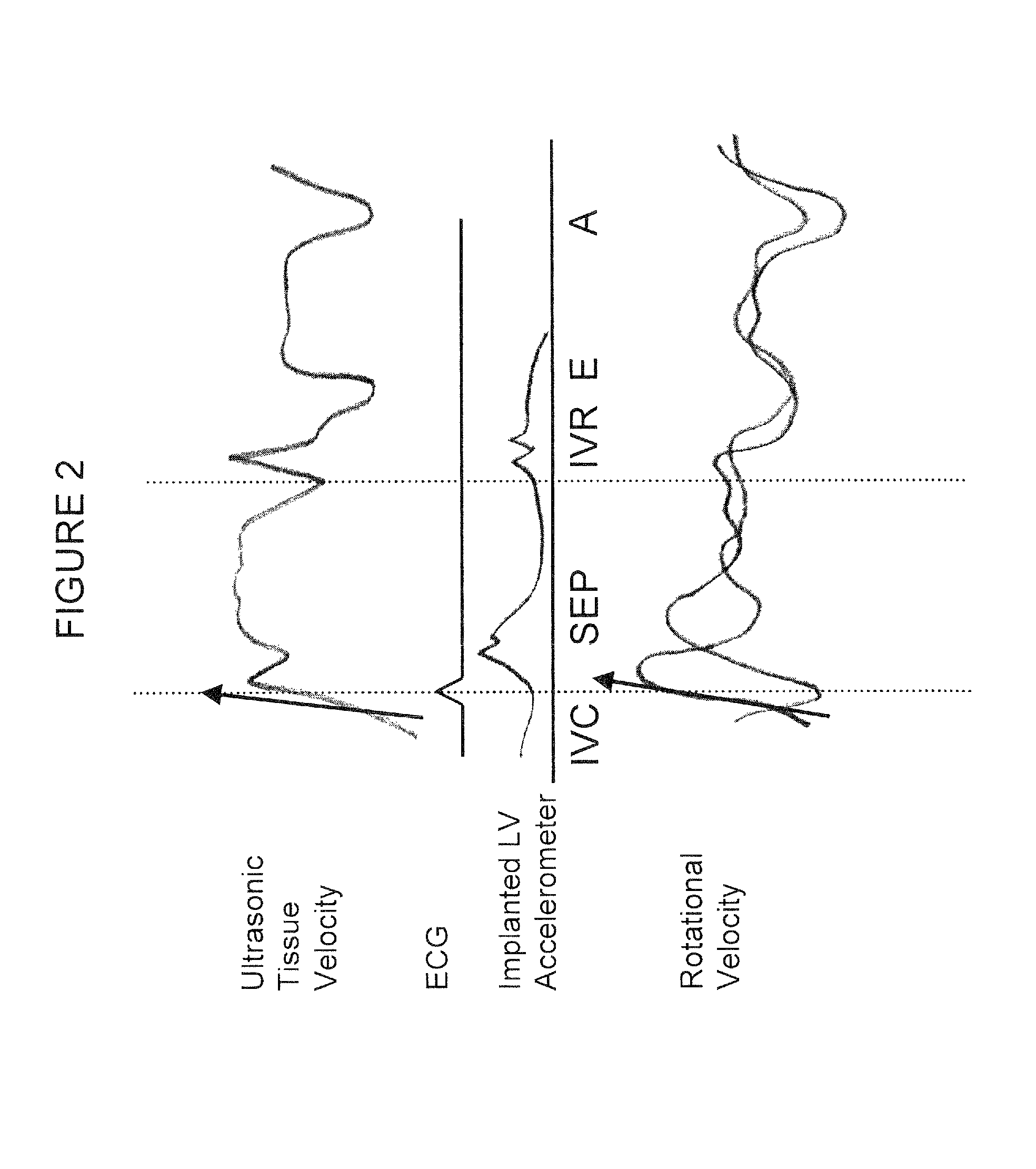Method and apparatus for defining the effect of atrial arrhythmias on cardiac performance and directing therapy using a plurality of intrinsically and extrinsically derived signals
a technology of atrial arrhythmia and directing therapy, which is applied in the field of method and apparatus for defining the effect of atrial arrhythmia on cardiac performance and directing therapy using a plurality of intrinsically and extrinsically derived signals. it can solve the problems of poor prognosis of patients with impaired cardiac performance, affecting quality of life, and unstable patients
- Summary
- Abstract
- Description
- Claims
- Application Information
AI Technical Summary
Benefits of technology
Problems solved by technology
Method used
Image
Examples
Embodiment Construction
[0056]The methods described herein serve to optimize cardiac performance in patients with atrial arrhythmias. Intrinsic properties such as hematologic profiles, patient / family history, cardiac tissue velocity / displacement and intracardiac blood flow are combined with extrinsic properties such as anatomic and functional descriptors of the heart (e.g. cardiac chamber sizes / geometry, pulmonary vein anatomy) and measurements of systolic and diastolic cardiac performance (e.g. left ventricular function).
[0057]Referring to FIG. 1, intrinsic and extrinsic physiological properties, G, V, DI and M are collected and digitized by the Detection Apparatus, 100. Apparatus 100 may be an external unit, part of a device programmer or contained within an implanted device itself. Any number of properties may be input to 100. By way of example, G may be atrial size, V mean atrial appendage velocity, DI relates to atrial-ventricular and intra-ventricular dysynchrony and M severity of mitral regurgitatio...
PUM
 Login to View More
Login to View More Abstract
Description
Claims
Application Information
 Login to View More
Login to View More - R&D
- Intellectual Property
- Life Sciences
- Materials
- Tech Scout
- Unparalleled Data Quality
- Higher Quality Content
- 60% Fewer Hallucinations
Browse by: Latest US Patents, China's latest patents, Technical Efficacy Thesaurus, Application Domain, Technology Topic, Popular Technical Reports.
© 2025 PatSnap. All rights reserved.Legal|Privacy policy|Modern Slavery Act Transparency Statement|Sitemap|About US| Contact US: help@patsnap.com



